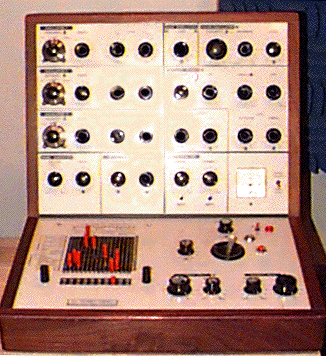| Voltage control synthesizer |
| the “classic”
patch:
|
| "Putney" (VCS-3) voltage control synthesizer, circa
1970, designed by Peter Zinovieff. Uses small pins to connect various
modules via an ingenious x/y matrix. Modules left to right from
the top: oscillator 1/ring modulator/low pass filter -
oscillator 2/envelope generator - oscillator 3 (low frequency)/reverb - noise generator/output filters/levels for external input/meter - pin patch/joystick/output levels. Not pictured, four octave keyboard (The Cricklewood")  |